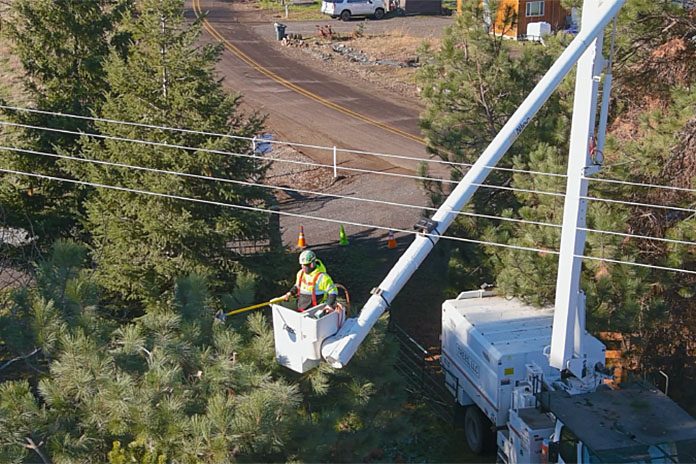
The term “wildfire mitigation” has gained increasing attention recently, but Umatilla Electric Cooperative has been well-acquainted with the concept for many years.
Wildfire mitigation involves actions taken to reduce the risk and impact of wildfires. This includes creating defensible space around properties, managing vegetation, conducting controlled burns, and implementing fire-resistant building practices. The goal is to protect lives, property, and natural resources by minimizing the potential for wildfires to start and spread.
“Wildfire mitigation isn’t anything different than what we’ve done even before the term came about,” said Kevin Knutz, operations manager at UEC. “We’re looking at it a little bit harder and just making sure that we’re maintaining clearance and doing things to mitigate our risk.”
The cooperative’s wildfire mitigation strategy involves both preventative actions and rapid response initiatives. One of the cornerstones of this strategy is vegetation management.

UEC conducts regular inspections and maintenance of the areas around its power lines and infrastructure. This includes trimming trees, clearing brush and removing dead or dry vegetation that could potentially serve as fuel for a wildfire. By maintaining a safe distance between vegetation and power lines, UEC significantly reduces the risk of sparks that could ignite a fire.
“The Public Utility Commission says that we have to maintain certain distances depending on voltages,” Knutz said.
The cooperative has a routine maintenance program for trees and brush growth around power lines. In cases where vegetation growth is faster, those sections of line may be trimmed more regularly.
“It doesn’t make sense for us to go out there and try to trim everything every single year to maintain, let’s say, a 10-foot window around that power line,” Knutz said. “We do it in a cycle — a four-year cycle — that seems to work for us. When we trim it back, we trim it back as far as the homeowner or as far as the right-of-way will allow us. Then we check it every single year, but the plan is to only visit it every four years. But we have some pockets that grow faster than that. Those have been identified and we address them accordingly.”
Umatilla Electric recently updated more than 1,200 advanced fuses in its high-fire danger areas. These advanced fuses are non-expulsion fuses, which reduce fire hazard.
“These fuses, when they get overloaded or a surge happens, they blow, but they blow internally,” Knutz said. “There’s no sparks that come out of those. They’re considerably more expensive than a normal fuse, but because of the high-risk area, they warrant the extra cost.”
Other efforts include installing more than 30 miles of underground line in higher-risk areas, trimming nearly 300 miles of vegetation and the installation of a weather station.
“The weather station helps us validate what the National Weather Service has reported. By looking at our weather station’s information and forecasted weather patterns, we can better plan and mitigate risks related to weather conditions,” Knutz said.
Education and community engagement are also key components of the cooperative’s wildfire mitigation efforts. Umatilla Electric regularly updates member-facing communications such as bill inserts and e-newsletters, according to Weston Putman, manager of public relations for the cooperative.
While the cooperative looks to balance the need for reliable electric service with wildfire risk reduction, the key is always safety first.









